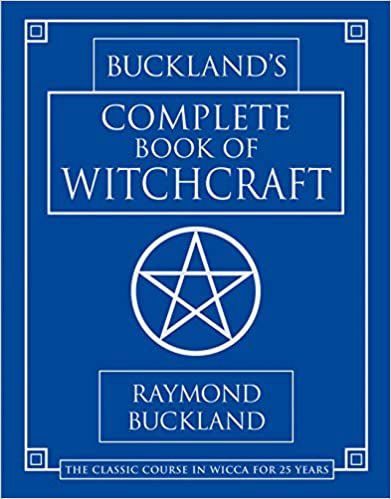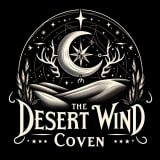Copyright © 2024 by Gray Seal
Introduction:
In the vast tapestry of advanced magick, there exists a realm that is both feared and revered—a realm cloaked in shadows and shrouded in mystery. Dark magick, often a topic of intense speculation and trepidation, beckons those who dare to traverse the enigmatic corridors of the occult. This two-part series delves into the multifaceted nature of advanced magick known as dark magick, exploring its origins, philosophies, and the intricate practices that define this esoteric path. Part 1 initiates our journey, shedding light on the complexities and nuances surrounding dark magick.
Understanding Dark Magick:
Dark magick is not a monolithic or inherently malevolent force; rather, it is a dynamic and multifaceted aspect of advanced magick that taps into the primal, transformative energies often associated with the shadows. Unlike conventional perceptions that paint dark magick as inherently evil, practitioners of this art recognize its potential for profound self-discovery, personal empowerment, and spiritual evolution.
At its core, dark magick involves the exploration and integration of the shadow self—a term popularized by Swiss psychiatrist Carl Jung. The shadow self represents the hidden and often neglected aspects of an individual's psyche, encompassing repressed desires, fears, and unresolved issues. Embracing the shadows in dark magick is a courageous endeavor that allows practitioners to confront their deepest fears, navigate the complexities of their inner landscape, and ultimately attain a more holistic understanding of the self.
The Philosophy of Balance:
Contrary to popular belief, dark magicians do not necessarily seek to unleash chaos or sow discord. Instead, many practitioners adhere to a philosophy of balance, acknowledging that light and dark are intertwined forces within the cosmic dance of existence. In the pursuit of spiritual growth and enlightenment, dark magicians recognize the necessity of embracing both aspects, understanding that the shadows hold keys to hidden wisdom and untapped potentials.
The Symbolism of Dark Magick:
Dark magick often employs symbolic representations that resonate with the primordial and the mysterious. Archetypes such as the Dark Goddess, the Horned God, or other shadowy figures serve as conduits for practitioners to connect with transformative energies. Symbols, rituals, and sigils used in dark magick act as gateways to the subconscious, allowing practitioners to communicate with the deeper layers of the psyche and the collective unconscious.
It is essential to note that the practice of dark magick requires a responsible and ethical approach. Practitioners are urged to adhere to principles that emphasize self-discipline, respect for free will, and an unwavering commitment to personal and collective well-being. Dark magicians understand that the power they wield can have far-reaching consequences, and the ethical considerations involved distinguish them from those who may misuse these potent energies.
In the realm of dark magick, practices and rituals are conduits for channeling transformative energies, exploring the depths of the subconscious, and unraveling the mysteries that lie within the shadows. The next part of our exploration takes us into the heart of these practices, shedding light on the methods that dark magicians employ to tap into the latent potentials of the shadow self.
Shadow Work:
At the core of dark magick lies the practice of Shadow Work. This involves delving into the recesses of the psyche, confronting suppressed emotions, fears, and desires. Dark magicians engage in introspective exercises, meditation, and ritualized self-exploration to bring the shadow self into conscious awareness. By acknowledging and integrating these hidden aspects, practitioners gain a profound understanding of their motivations and can harness the transformative power within.
Rituals of Transformation:
Dark magicians often engage in rituals designed to catalyze personal transformation. These rituals may include the use of symbolic tools, invocations, and ceremonial practices aimed at accessing the energies associated with the shadows. The goal is not to succumb to darkness but to transmute it into a source of strength, resilience, and empowerment. Such rituals act as catalysts for spiritual evolution and a deeper connection to the mysteries of existence.
Invocation of Dark Deities:
The pantheon of dark deities plays a significant role in dark magick. Dark magicians may invoke entities such as Hecate, Lilith, or Baphomet, viewing these deities not as malevolent forces but as archetypal representations of transformative energies. Invocations are conducted with the intention of seeking guidance, wisdom, and a harmonious alignment with the shadow aspects of the self.
Sigil Magick:
Sigils, symbolic representations charged with magickal intent, are prevalent in dark magick practices. Dark magicians create personalized sigils to focus their will and channel transformative energies. These symbols act as gateways to the subconscious, allowing practitioners to communicate their desires to the hidden depths of the mind and the universe.
Energetic Work:
Dark magicians often engage in energy manipulation to tap into the potent forces associated with the shadows. Techniques such as grounding, centering, and working with the chakras are employed to achieve a balanced flow of energy. This mastery of energy allows practitioners to navigate the realms of darkness with clarity and purpose.
It is crucial to emphasize that dark magick, like any form of advanced magick, requires a deep sense of responsibility, ethical considerations, and a commitment to personal growth. The shadows, when approached with respect and intention, offer a rich terrain for self-discovery, empowerment, and spiritual evolution. In our final exploration, we will delve into the ethical considerations of dark magick and the potential pitfalls that practitioners must navigate on this intricate path of advanced magick.

